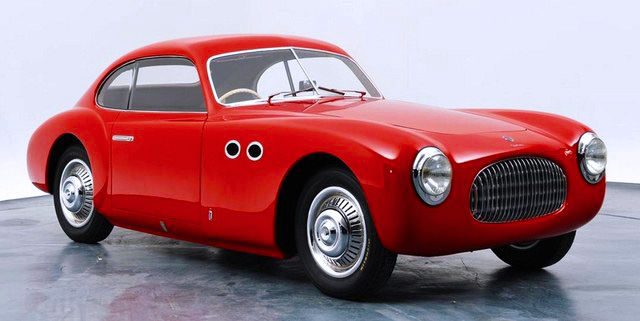Part 82: Carrozzeria Pininfarina
By David Cavaliere
In the rich history of the Italian Automobiles, there have been geniuses, innovators, industrial titans and automotive giants. Battista Farina, nicknamed “Pinin,” was based on being the youngest boy in the family. He was the 10th of 11 children. Although he was of average height, he was a giant in the industry. Pininfarina designs have influenced every car designer that followed. Henry Ford wanted him to move to America and work at Ford. He was perhaps the only man that Enzo Ferrari treated as an equal. His body of work produced styling that ranged from the classic to the revolutionary. The spirit of innovation was passed along to his son Sergio, who ran the company once Pinin retired. Both have passed on, but the legacy of the men’s designs will continue to live on as long as there is an interest in the History of the Italian Automobile.
Battista “Pinin” Farina was born in Turin on November 2, 1893. At the age 11 he began working in his brother Giovanni’s body shop, the “Stabilimenti Farina.” During World War I, he supervised the construction of the “Aviatic” trainer planes, igniting an interest in aerodynamics that would last throughout his life. In 1920, he came to the U.S. to judge first-hand the country’s automotive developments. He met with Henry Ford, who invited him to work for him. Pinin declined, but returned to Italy imbued with an even greater entrepreneurial spirit; but it would be another decade before he would found his own firm – Carrozzeria Pinin Farina in 1930. His plan was to build special car bodies, but wanted to transform car body manufacturing into an independent industry and in a short time his factory could produce eight cars per day. Even before the Second World War, his plant in Corso Trapani had produced car bodies of revolutionary design, anticipating the lines that automobiles would have in the future. The first official Pinin Farina special appeared at the 1931 Concours d’Elegance at Villa d’Este. His first accomplishments in the 1930s included the Hispano Suiza Coupé and the Fiat 518 Ardita. He would soon become the preferred carrozzeria for Alfa Romeo, a relationship that has now lasted over 80 years. The Second World War interrupted the car industry for several years, but Pinin’s creative spirit never wavered.
After the war, Pininfarina designed and produced, among other things, the 1946 “Cisitalia” (see Part 19 Cisitalia – What if? June 2, 2016), shown in the Museum of Modern Art in New York as one of the eight outstanding cars of our time. It was defined as the best expression of simplicity and beauty of design in the automotive field and set the standard for the post-war era automobile. In 1946, Pinin and his son Sergio drove two cars to the Paris Auto Show, but were denied entry. He set up the two cars, a Lancia Aprilia Cabriolet and an Alfa Romeo 6C 2500 Speciale outside the Grand Palais and created a media sensation (see Part 8: Pininfarina and the 1946 Lancia Aprilia Cabriolet Speciale, March 3, 2016).
In 1951, Enzo Ferrari requested a meeting with Pinin. One writer said of the meeting – Ferrari and Pinin? It won’t last. It’s like putting two Prima Donnas in the same opera! However, the relationship blossomed and led to the creation of some of the world’s most beautiful cars.
In the years that followed, many automotive manufacturers would turn to Pinin for the planning of new models for the assembly line. In 1961, after 50 years of activity, Pininfarina turned over the direction of the firm to his son Sergio and his son-in-law Renzo Carli. This change, nonetheless, assured the continuation of Pinin’s work since they took place as designers as well as industrial managers. Throughout his life, Pinin was the unquestioned master of building techniques for automobiles, with a perfect blending of technology, aerodynamics and artistry.
In our next feature, we will continue with Pinifarina’s outstanding and iconic designs. Please send comments to [email protected]





